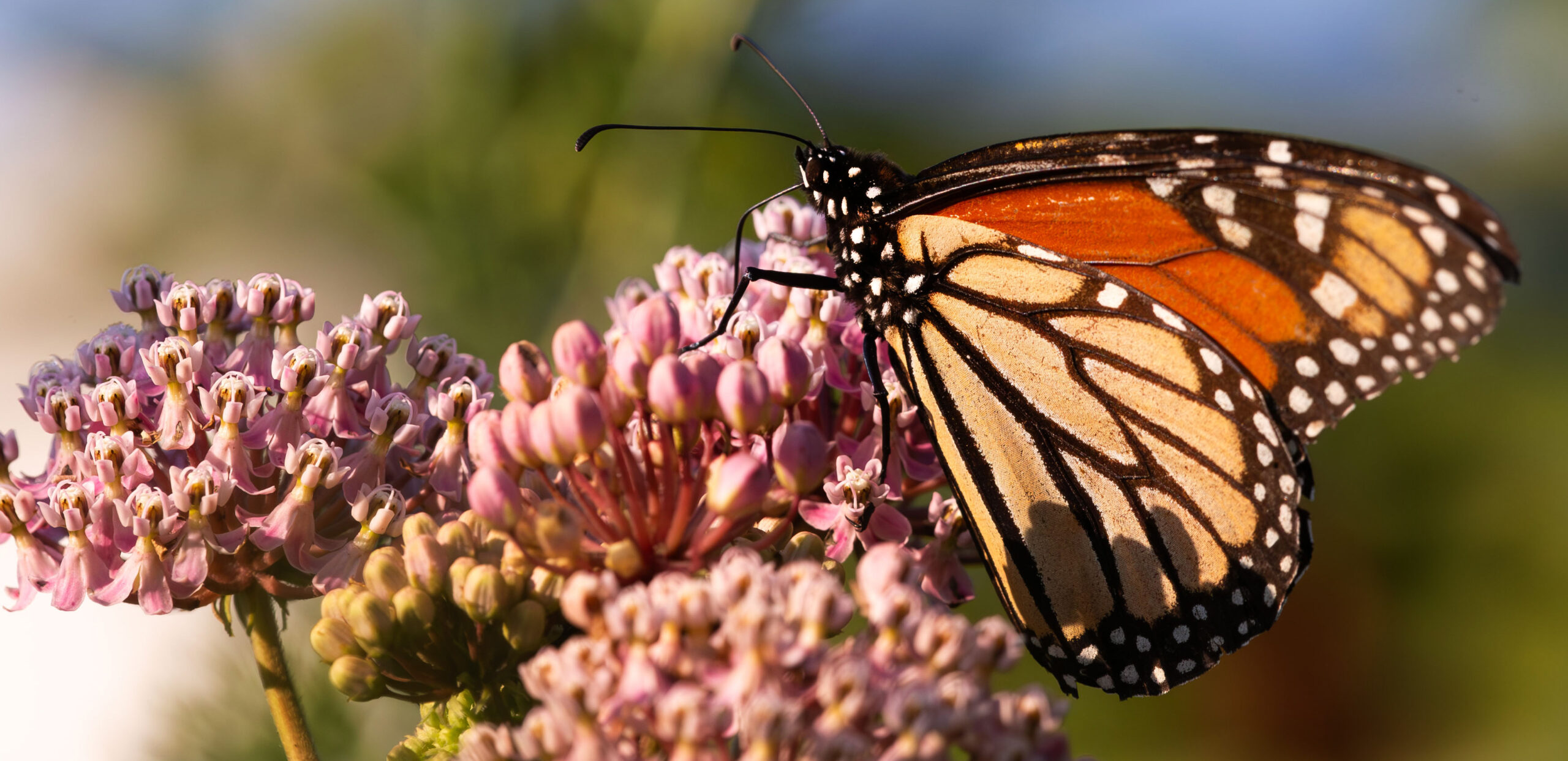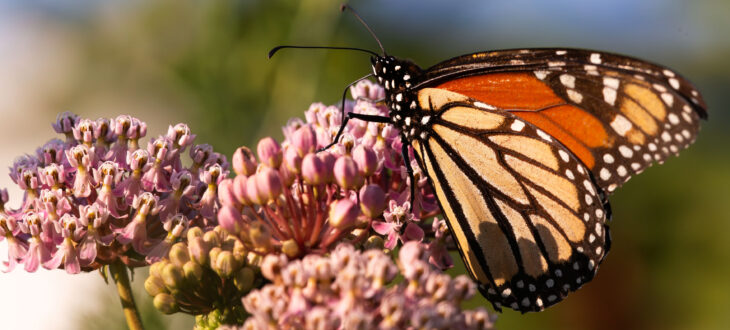Fish and Wildlife Service Proposes Threatened Status for Monarch Butterflies
December 10, 2024

By KELLY BOSTIAN
Oklahoma conservationists are heralding the U.S. Fish and Wildlife Service's Tuesday proposal to list the monarch butterfly as a threatened species under the Endangered Species Act.
The proposed Section 4(d) status includes setting aside 4,395 acres of critical overwintering habitat in Southern California for the western population and requesting public comments to determine protective regulations east and west of the Rocky Mountains.
Recent surveys note a 90-percent population decline from all-time highs east of the Rocky Mountains and a 50-percent decline for a western population that lives primarily in California.
Marci Hawkins, Monarch Watch conservation specialist for Oklahoma, said nonprofits and agencies statewide will encourage people to voice their opinions during a three-month public comment period from Dec. 12 through March 12, 2025.
“This is a result people were expecting, were hoping for. It’s not scary,” she said. “Everyone now will be thinking things through very carefully and issuing position statements.”
Public comments are critical as they will direct the final Fish and Wildlife regulations, which will be published one year after the end of the comment period.
In its proposal, Fish and Wildlife said monarchs are threatened by ongoing impacts from loss and degradation of breeding, migratory, and overwintering habitat (from past conversion of grasslands and shrublands to agriculture and widespread use of herbicides; logging/thinning at overwintering sites in Mexico; urban development, senescence (i.e., deterioration with age), and incompatible management of overwintering sites in California; and drought), exposure to insecticides; and effects of climate change.
In its proposal, Fish and Wildlife assesses the populations' resilience, noting a probability of extinction for the eastern population of 56% to 74% in 60 years but greater than 99% for the western population over the same period.
The Service is asking for views on a wide range of topics that impact monarch populations and measures that can be implemented to protect them.
Sandra Gladish, U.S. Fish and Wildlife Southwest Region public affairs specialist said Oklahomans are off to a good start in this process.
“Across Oklahoma, efforts by NGOs, federal partners, and local communities to plant native seeds have been (excuse my pun) coming into full bloom in recent years,” she wrote via email.
“In the preservation of these important species, there are so many ways to get involved.”
Monarch Joint Venture executive director Wendy Caldwell said the announcement calls for diverse voices to forward thoughtful innovations with an “all-hands-on-deck” approach.
"Monarch declines have long driven conservation efforts across both public and private sectors. This pivotal moment serves as a powerful call to action—emphasizing the urgent need to strengthen and expand our efforts,” she said.
Monarch Watch founder Chip Taylor, a retired University of Kansas Department of Ecology and Evolutionary Biology professor, said the current plight of monarchs illustrates the broad approach needed to help the species. The eastern population, which summers as far north as southern Canada and overwinters in Mexico, appears to be at one of its lowest points since record-keeping began in the early 1990s.
He said the worst losses last year involved widespread drought across the fall migration route. This year, continuous rain doused early-summer reproductive efforts across the Upper Midwest.
“It is a continental species, and so it is impacted by a wide variety of challenges,” he said. “Habitat loss and climate change are key factors.”
Katie Hawk, executive director of Oklahoma Monarch Society, said the announcement reinforces the group’s continuing efforts.
“Oklahoma provides critical habitat for monarch butterflies as they migrate through our great state twice yearly. Because of this and their unfortunate decline, we’ve been bringing Oklahomans together to take action and help save the monarch butterfly since 2016,” she said. “We work with 60+ partners statewide to implement collaborative solutions that benefit people and pollinators. Anyone is welcome to join us and take action by visiting okiesformonarchs.org.”
People can find how to submit comments at regulations.gov by searching for docket number FWS-R3-ES-2024-0137. This docket also includes information about how to attend two virtual public information meetings and associated public hearings related to this listing proposal.

